The works try to re-read and re-interpret South America's lines
Originally published on Global Voices

The piece ”Folded Continents” (South America), by Marina Camargo (2019) | Image: Republished with permission
This text, written by Anna Ortega, was originally published on the website Nonada Journalism on July 1, 2023. It is republished here under a partnership agreement between Nonada and Global Voices, with edits. All images here are used with permission or licence for republication.
The map of Brazil is a drawing made by colonizers’ hands. The borders that divide it from the rest of South America and those that divide its federal states are lines that reflect the historical processes of the invasion of these lands.
Brazilian artists have been creating new works which provoke discussion about Brazil’s formation. Such is the work of Marina Camargo, from the northeastern Alagoas state, who made a map from latex, and of Jefferson Medeiros, from Rio de Janeiro, who made a carving of Brazil’s territory with wood.
Maurício Igor, from the northern state of Pará, placed his body in the map, in a painting made on a piece of plywood measuring 1.5 metres.
The first atlases, dating from the late 16th century, claimed to show the world “as it really is”, but contributed to the appropriation of Indigenous territories and the domination of these peoples. In the following centuries, maps continued to be used by capitalists to establish their order, consolidate economic blocs, and justify the exploitation of natural resources.
Over time, the notion of cartography as a definitive record of reality began to be challenged, and theorists and artists began to propose a counter-cartography, or critical cartography, problematizing this historical use of maps for the legitimization of colonialism and nationalism.
An example is the piece “Inverted America,” by the Spanish-Uruguayan artist Joaquín Torres Garcia, which has become one of the greatest symbols of Latin American identity. In his manifesto “The School of the South,” he explains: “We turned the map upside down to get an exact idea of our position, without worrying what the rest of the world thinks.”
As part of cosmopolitical Indigenous art, as the artist Denilson Baniwa defines it, he presented “There Is No Cartography in the Shamans’ World” (2020). The work is based on a map of Amazonian rivers dating from the 17th century, on which he drew designs, imposing counter-colonial symbols on the colonizers’ tool.

“There Is No Cartography in the Shamans’ World” by Denilson Baniwa (2020) | Image: Reproduction / Republished with permission
The researcher Ana Paula do Val discussed the concepts of affective cartography and the cartography of memories as parts of a dialogue. She believes that affective maps dialogue with these other ways of thinking as a process of sociocultural mediation. This involves creative processes, which develop artistic and cultural perceptions and promote a subjective understanding of maps, evoking contexts, narratives, and identities that are manifested on them.
In her work, the artist and activist Lyz Parayzo references the series of sculptures “Bugs” by Lygia Clark. Parayzo makes metal sculptures with the sharp edges exposed, leaving the apparent danger of contact ever-present. Although static, the impression given is that at some point the gears’ teeth will rotate, and the map of Brazil will be disassembled.
These artists make us question: What constitutes a territory? What is this country made of? What does a map show?
Diaspora (2022) by André Vargas
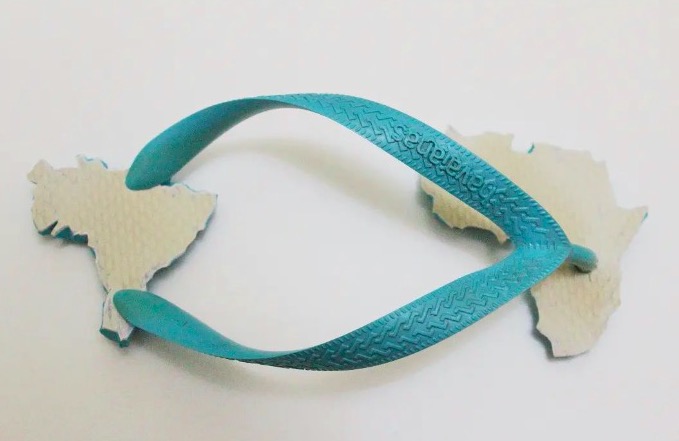
“Diaspora” by André Vargas (2022) | Image: Reproduction / Republished with permission
André Vargas, an artist who works with the power of the word (Ofó, in Yoruba), studies popular and imaginative sayings. From cultural, linguistic, religious, historical, and aesthetic elements, André articulates ancestry and evokes origins, primarily African. In artistic productions that often evoke rituals, he takes an interest in the encounter between personal and collective memory.
In his work “Diaspora,” sculpted from flip flops — which are very popular in Brazil — the African and American continents are joined. The material chosen is also central, as it imports and informs of a desire to speak about a present history, which walks alongside us.
Untitled (2022) by Maurício Igor
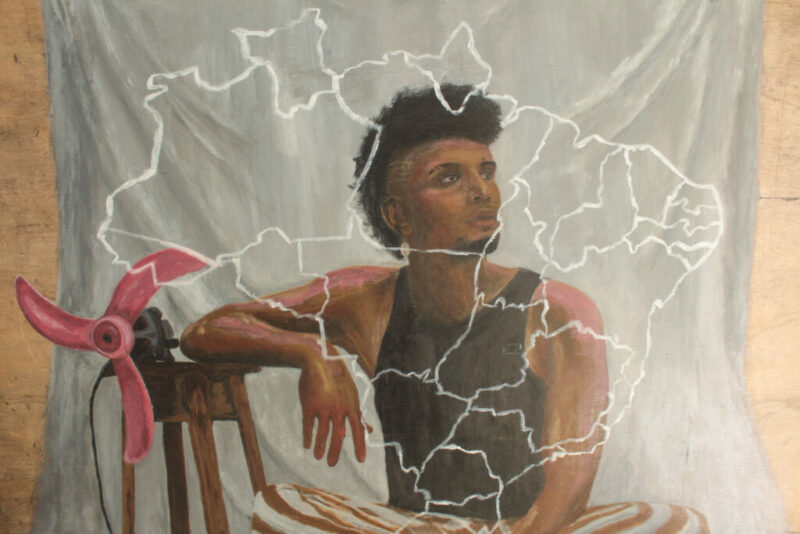
Untitled, by Maurício Igor (2022) | Image: Reproduction / Republished with permission
Maurício Igor explores issues of identities in themes such as gender, sexuality, ethnic “mixing,” decoloniality and everyday life in the Amazon region. He has also focused on the theme of displacement, which is reflected in his personal history, and he explores it with photographs, videos, performances, texts, and installations. He is currently doing a master's degree in contemporary artistic processes at the State University of Santa Catarina, where he researches the meanings associated with the Afro-Amazonian body affected by displacement.
One of his works shows the artist's self-portrait, where he is sitting on the floor with his elbow resting on a fan, under the map of Brazil. He keeps his gaze fixed on the distance, out of the frame — as somebody who sees beyond what is circumscribed by Brazil's borders. His gaze seems to seek the territory over there, over the seas.
Invasion (2017) by Jaime Lauriano
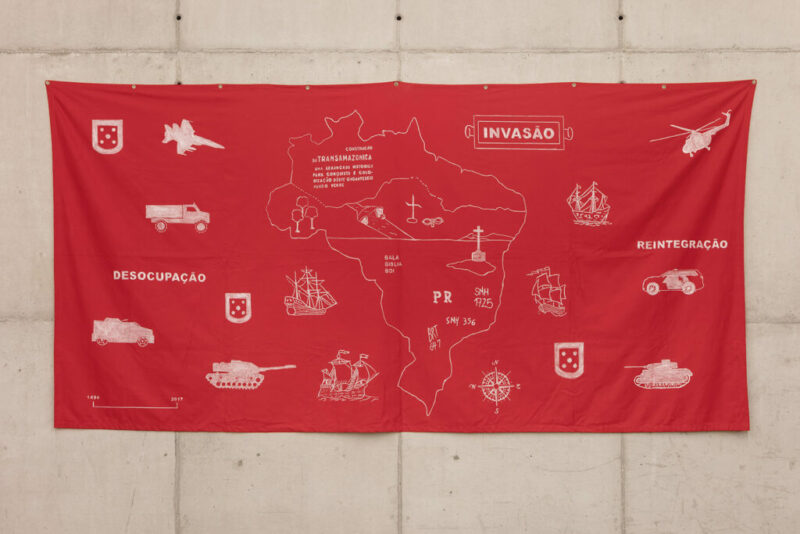
“Invasion” by Jaime Lauriano (2017) | Image: Neonarte / Reproduction / Republished with permission
The work of Jaime Lauriano is known for questioning history as it is told officially. He is one of the artists best known for developing alternative maps of Brazil, by questioning its formation and its myth of racial democracy. Lauriano explains the different layers of violence that these narratives bring, and attempts to synthesize a series of issues which are connected to colonization and yet are still current, such as deforestation and the invasion of Indigenous lands. His works are also inspired by research on the current manifestations of violence by institutions of power and control, such as police, prisons, embassies, and borders.
America-Latex (2020) by Marina Camargo
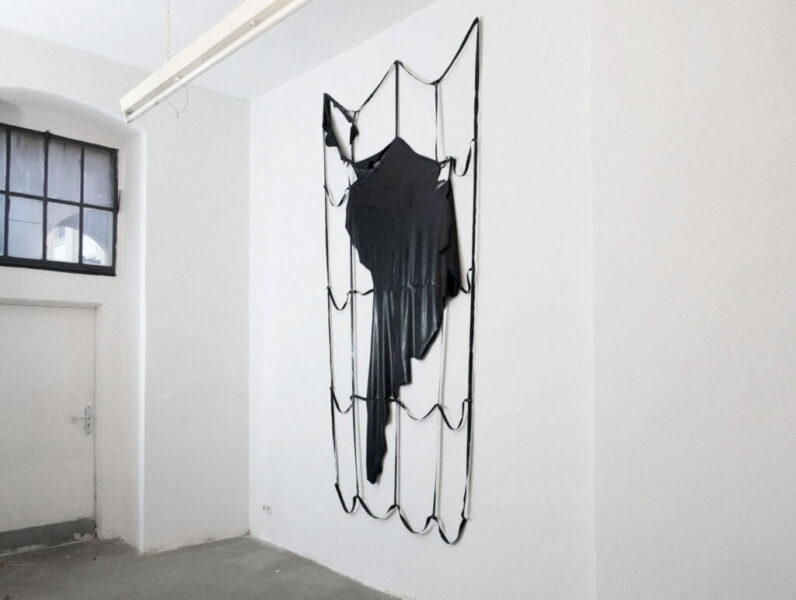
” America-latex ” by Marina Camargo (2020) | Image: Reproduction / Republished with permission
Maps are common in the work of Marina Camargo, who is interested in the mechanisms of power that these objects reflect. By constructing them from latex, a flexible and elastic material, which is linked to the colonization of Brazil, the pieces depict a fragile cartography in which “the shapes of Latin America's geography seem like a film torn from the surface, as if it were a map without a foundation,” as the artist explained. Originally extracted from the Amazon, the exploitation of rubber was at the core of the occupation of Brazil, since the 19th century. Another material the artist uses is metal. In the series “Folded Continents,” she transforms cartographic representations into elastic shapes, playing with their dimensions to reflect on geopolitics.
Baaraz Ka’Aupan (2022) by Gustavo Caboco
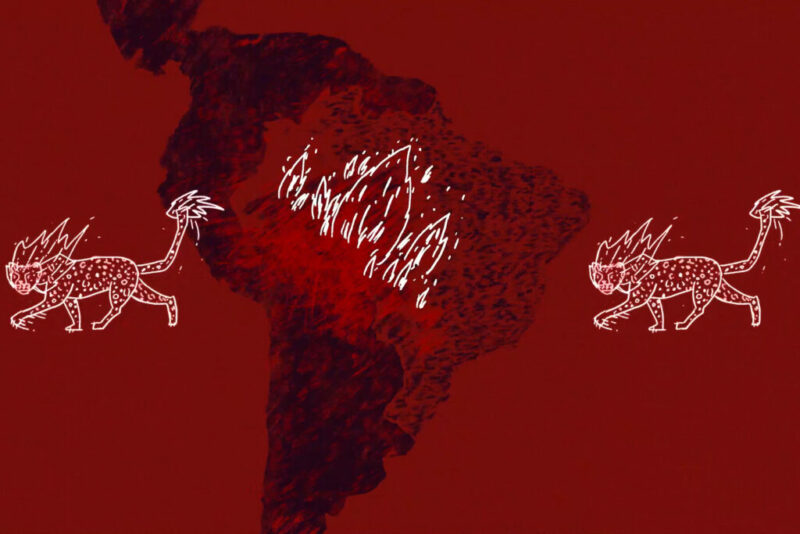
” Baaraz Ka'aupan ” by Gustavo Caboco (2022) | Image: Reproduction / Republished with permission
Baaraz Ka'aupan means “field in flames” in the Wapichana language. For the artist Gustavo Caboco, in the piece there is a fire that goes beyond academic thought, encourages mineral extraction and that, using colonial tools, contributed to an erasure of Indigenous thought in Brazil. This red map, in flames, raises an alert and also makes a call to look at the territory from Indigenous perspectives. In his works, Caboco uses drawings, paintings, texts, and animations to make connections to the land. He reflects on the displacement of Indigenous bodies and on the production and reopening of memory.
“Trowel” (2021) by Jefferson Medeiros
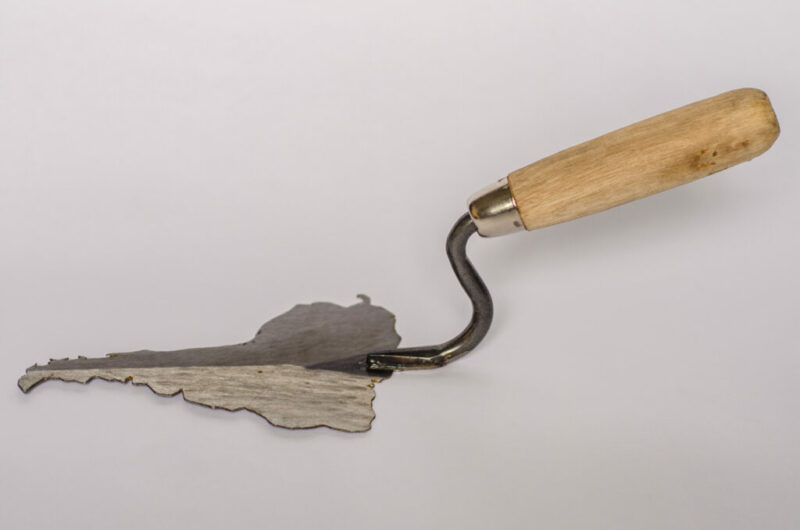
“Trowel” by Jefferson Medeiros (2021) | Image: Reproduction / Republished with permission
Jefferson Medeiros has a degree in history and specializes in African and Afro-Brazilian cultures. His work discusses coloniality, worker exploitation, and violence in the daily life of marginalized urban areas, as well as questioning the roots and consequences of these issues. He uses diverse materials, from concrete to ammunition shells, and is interested in an epistemology based in these marginalized communities for understanding the reality he experiences. In one of his works, South America appears in the form of a trowel.
Cartographic Imaginary of a Brazilian City (2017-2020) by Iris Helena

“Cartographic Imaginary of a Brazilian city”, by Íris Helena (2017-2020) | Image: Reproduction / Republished with permission
Iris Helena is a multidisciplinary artist and researcher of the urban landscape and its critical, philosophical, aesthetic and poetic dimensions. Her pieces stand out, especially in the choice of surfaces and supports chosen to construct the landscapes, including common everyday items such as tax documents. In “A Cartographic Imaginary of a Brazilian City,” the artist created a map based on cartographic studies of the development of cities such as João Pessoa, Recife, Natal and Rio de Janeiro. The urban layouts displayed in the maps reveal colonial features, political differences, and narratives of power and domination.
Flag #2 (2021) by Lyz Parayzo
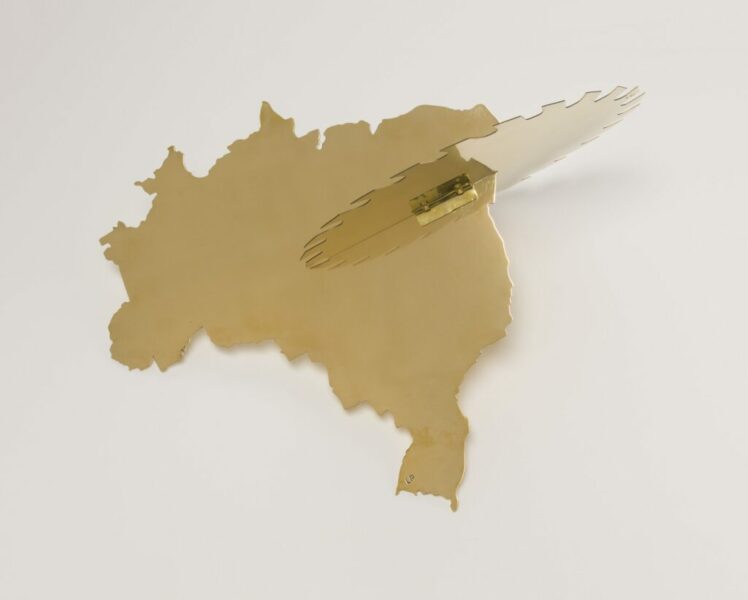
“Flag #2″ by Lyz Parayzo (2021) | Image: Reproduction / Republished with permission
Lyz Parayzo is an artist who works with audiovisual content, jewellery, sculpture, and performance. Her work often uses the body as a focal point, and its daily performativity as a research area. Recently she has been developing objects with the theme of self-defense, such as the piece Flag #2, which changes from silver jewellery to aluminium armour, shields, and weapons.
Post a Comment